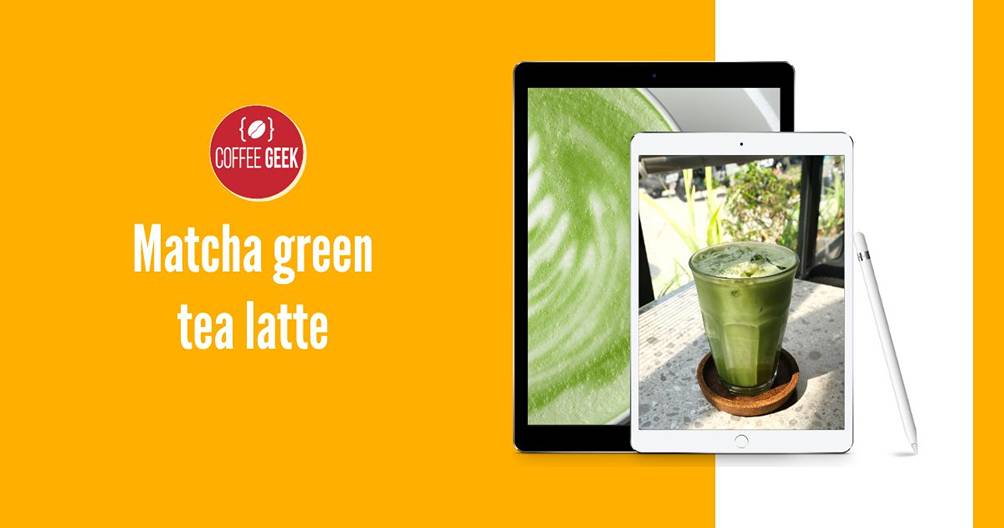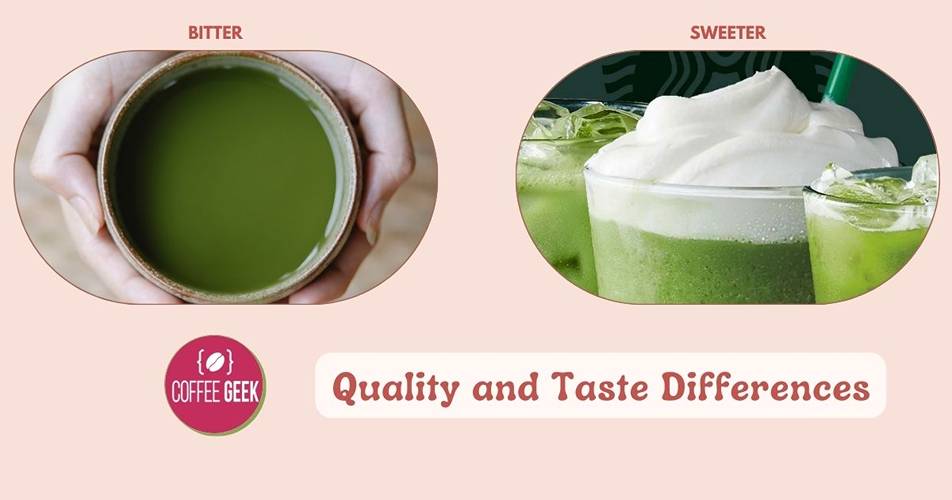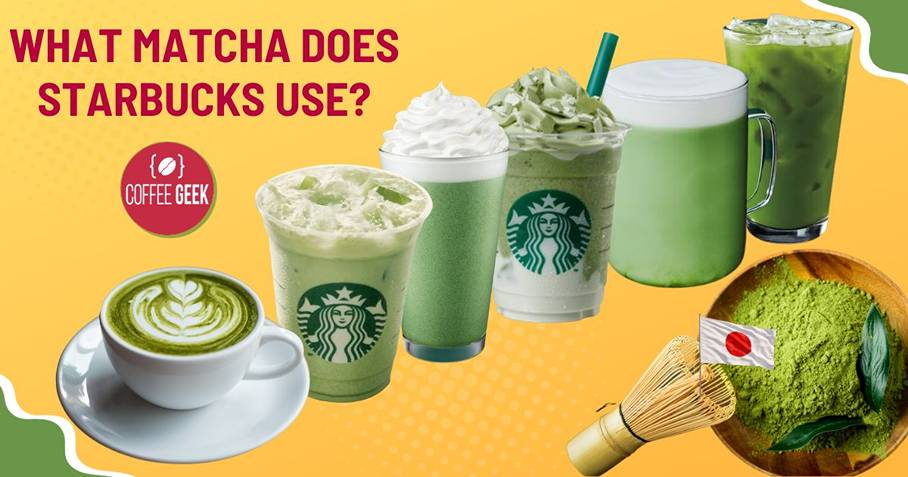Matcha enthusiasts, rejoice! We’re here to unveil the secret behind Starbucks’ matcha blend, which has been the subject of much curiosity and speculation.
“What matcha does Starbucks use?” – is a question often asked. Is Starbucks’ matcha just as healthy and authentic as the traditional matcha we know and love?

How does it compare to the matcha served in other coffee shops like Mountain Lyon Cafe?
Join us as we explore the world of Starbucks matcha, comparing it to traditional matcha, and offering tips on customizing your
Starbucks matcha experience and even making your own high-quality matcha drink at home!
Key Takeaways
Starbucks’ matcha blend is a combination of green tea powder and sugar for a sweeter flavor.
Starbucks offers signature drinks with various flavors, milks, and added sugar content.
Make your own high-quality matcha drink at home using ceremonial grade matcha powder from reliable sources to enjoy its full benefits.
What Matcha Does Starbucks Use?

If you’ve ever ordered a matcha green tea latte at Starbucks, you may have wondered what kind of matcha powder they use in their drinks.
Starbucks’ matcha blend consists of green tea powder and sugar, resulting in a sweetened matcha flavor.
This differs from the pure, traditional matcha green tea powder that many people are accustomed to, which usually has a more pronounced bitterness and no added sugar.
Starbucks’ Signature Matcha Drinks
Starbucks offers a variety of signature matcha drinks that cater to different tastes and preferences, including the Starbucks Matcha Green Tea options.
Some of the most popular options include the Matcha Green Tea Latte, Matcha Lemonade, Iced Pineapple Matcha Drink, and the refreshing Iced Matcha Latte.

A Starbucks Matcha Latte, for instance, is made with steamed milk, matcha green tea powder, and sweetener, creating a delicious and comforting beverage that many enjoy.
If you’re looking for an iced option, the Iced Pineapple Matcha Drink combines matcha tea with a coconut milk blend, pineapple ginger syrup, and ice, creating a refreshing and tropical twist to the classic matcha drink.
With various matcha drinks available at Starbucks, there’s a matcha beverage for everyone.
However, bear in mind that Starbucks’ unique matcha blend slightly deviates from traditional matcha due to its added sugar content.
The Matcha Powder Ingredients

Starbucks’ matcha powder, made from powdered green tea and sugar, consists of two main components. These are green tea and sugar.
This blend offers a sweeter taste profile compared to traditional, pure matcha, which has no added sugar and a more pronounced bitterness.
It’s worth considering that the added sugar in Starbucks’ matcha powder could impact the overall health benefits and nutritional value of the finished matcha beverage.
The Origin of Starbucks’ Matcha

While Starbucks’ matcha powder is sourced from Japan, the exact origin and production process remain undisclosed. It is known that Starbucks uses matcha from the Uji region of Kyoto, Japan.
This region has long been renowned for its high quality matcha. Traditional Japanese matcha production involves a labor-intensive process that results in a high-quality, vibrant green powder with a rich flavor.
Although Starbucks’ matcha blend might not be as authentic as traditional matcha, it still offers a unique taste experience for matcha lovers, especially with their Starbucks matcha tea blend.
Comparing Starbucks’ Matcha to Traditional Matcha
When comparing Starbucks’ matcha blend to traditional, high-quality matcha, there are some noticeable differences in terms of quality, taste, and health benefits.

The added sugar in Starbucks’ matcha blend sets it apart from the pure, authentic matcha that many people are familiar with.
Let’s further explore these differences and understand the comparison between Starbucks’ matcha and traditional matcha.
Quality and Taste Differences
The quality of traditional matcha is often determined by factors such as the presence of catechins, the use of high-quality tea leaves like Tencha, and the grade of matcha, such as ceremonial grade.
Starbucks’ matcha, on the other hand, has a sweeter taste due to the added sugar in its blend and may be of a lower grade than traditional matcha.

When it comes to the flavor profile, Starbucks’ matcha is characterized by its sweetness, while traditional matcha has a more pronounced bitterness accompanied by bright, fresh, and green notes, plus a slight umami note.
This difference in taste is mainly attributed to the added sugar in Starbucks’ matcha blend, which results in a sweeter flavor that may be more palatable for some, but less authentic for others.
Health Benefits Comparison
Matcha is known for being rich in antioxidants, which can help protect cells from damage and offer various health benefits.
However, when it comes to Starbucks matcha healthy options, the health benefits of Starbucks’ matcha are reduced compared to traditional matcha, mainly due to the added sugar content.
Although Starbucks’ matcha might still offer some health benefits, the added sugar content could potentially lower its overall nutritional value when compared to traditional matcha.
Customizing Your Starbucks Matcha Experience
Even though Starbucks’ matcha blend may not be as authentic as traditional matcha, there are ways to customize your Starbucks matcha drink to suit your preferences and dietary needs.
From reducing the sugar content to opting for non-dairy milk alternatives, you can still enjoy a Starbucks matcha drink that aligns with your taste buds and nutritional requirements, regardless of the matcha does Starbucks use.
Reducing Sugar Content
If you prefer a less sweet matcha drink, you can request fewer pumps of syrup or choose a sugar-free sweetener at Starbucks.
With various sugar-free sweeteners available, such as sugar-free vanilla syrup, sugar-free cinnamon dolce syrup, Splenda, Stevia, and Equal, you can still enjoy the flavor of Starbucks matcha without the added sugar.
Non-Dairy Milk Options
For those seeking a vegan-friendly matcha experience, Starbucks offers various non-dairy milk options, such as soy, almond, and coconut milk.
These milk alternatives not only cater to different dietary preferences but also provide unique taste profiles that can enhance the flavor of the matcha drink.
Customizing your Starbucks matcha beverage allows you to savor a matcha experience that aligns with your preferences, making it your go-to matcha Starbucks drink.
How to Make Your Own High-Quality Matcha Drink at Home

Making your own high-quality matcha drink at home allows you to control the ingredients and enjoy the full benefits of traditional matcha.
By selecting the right matcha powder and following simple recipes, you can create matcha beverages that cater to your taste preferences, without compromising on quality and health benefits.
Selecting the Right Matcha Powder
To craft the finest matcha drinks at home, selecting a high-quality, ceremonial-grade matcha powder from a trusted source is crucial.
Look for matcha powder with the following characteristics:
Vivid green hue
Smooth and pleasing aroma
Silky texture
Butter vegetal notes in the scent
Pleasant flavor without excessive bitterness
Positive reviews and standing
Higher cost in comparison to lower quality matcha powders
Some highly recommended ceremonial-grade matcha brands include Kyoto Dew Ceremonial Grade Matcha, Ippodo Tea Ummon, and Matcha Konomi Akira Organic Ceremonial Matcha.
You can find these high-quality matcha powders online through various retailers, such as Nativas Organic Matcha Powder, Coldbrew Original Matcha, Coldbrew Organic Matcha, Coldbrew Reserve Matcha, and Yuuki-cha.
Simple Matcha Drink Recipes
Once you’ve chosen the right matcha powder, you can try making traditional matcha tea at home by following a simple recipe:
Heat spring or filtered water.
Measure out or sift 1.5 chashaku spoonfuls (2g, or 1/2-1 teaspoon) of Matcha into a bowl.
Add a few drops of hot water to the matcha powder and mix into a paste with a spoon.
Gradually add more hot water to the paste and mix until smooth.
Whisk the matcha vigorously in a zigzag motion until frothy.
If you prefer a creamier matcha drink, you can make a Matcha Latte by combining matcha powder with hot water and adding steamed milk and sweetening to taste.
For a refreshing twist, try a Matcha Lemonade by combining matcha powder with lemon juice, water, and sweetener.
Or, for a healthy and delicious drink, blend matcha powder with your choice of fruits, yogurt, and milk for a Matcha Smoothie.
With these simple recipes, you can enjoy the authentic taste and health benefits of matcha, made from green tea leaves, right in the comfort of your home.
Summary
In conclusion, Starbucks’ matcha blend differs from traditional, high-quality matcha in terms of quality, taste, and health benefits, primarily due to the added sugar content.
However, you can still customize your Starbucks matcha experience by requesting less sugar or opting for non-dairy milk alternatives.
To truly enjoy the full benefits and authentic taste of matcha, consider making your own high-quality matcha drink at home using ceremonial-grade matcha powder and following simple recipes.
Embrace the world of matcha and discover new ways to enjoy this versatile and nutritious green tea powder!
Frequently Asked Questions
What do Starbucks put in their matcha?
Starbucks matcha lattes are made with a blend of milk, ice, sugar, and high quality organic Japanese matcha. This simple yet tasty combination creates an unbeatable cafe-style latte.
What’s the difference between matcha and green tea at Starbucks?
Starbucks Matcha is not true Matcha as it contains at least 51% added sugar, whereas green tea from Starbucks does not contain added sugar.
What type of matcha is best for lattes?
Ceremonial grade matcha is the best type for lattes, while culinary grade is better suited for baking. Ceremonial grade has a milder flavor and won’t be as bitter when consumed on its own.
How can I reduce the sugar content in my Starbucks matcha drink?
Request fewer pumps of syrup or choose a sugar-free sweetener when ordering your Starbucks matcha drink to reduce the sugar content.
What non-dairy milk options are available at Starbucks for a vegan-friendly matcha experience?
At Starbucks, you can enjoy a vegan-friendly matcha experience with soy, almond, and coconut milk options.

